



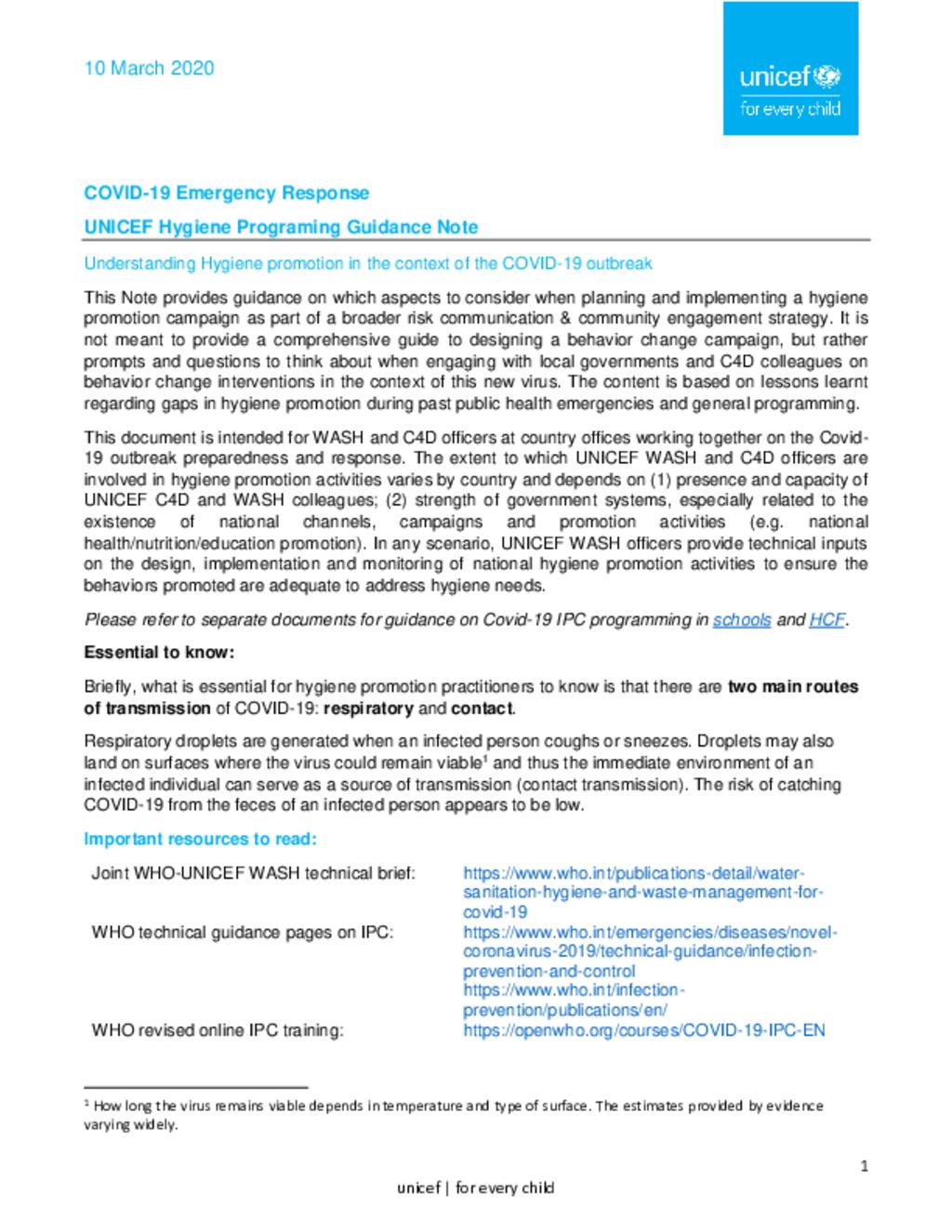 |
UNICEF Hygiene Programing Guidance Note - Understanding Hygiene promotion in the context of the COVID-19 outbreakThis Note provides guidance on which aspects to consider when planning and implementing a hygiene promotion campaign as part of a broader risk communication & community engagement strategy. It is not meant to provide a comprehensive guide to designing a behavior change campaign, but rather prompts and questions to think about when engaging with local governments and C4D colleagues on behavior change interventions in the context of this new virus. The content is based on lessons learnt regarding gaps in hygiene promotion during past public health emergencies and general programming. This document is intended for WASH and C4D officers at country offices working together on the Covid- 19 |
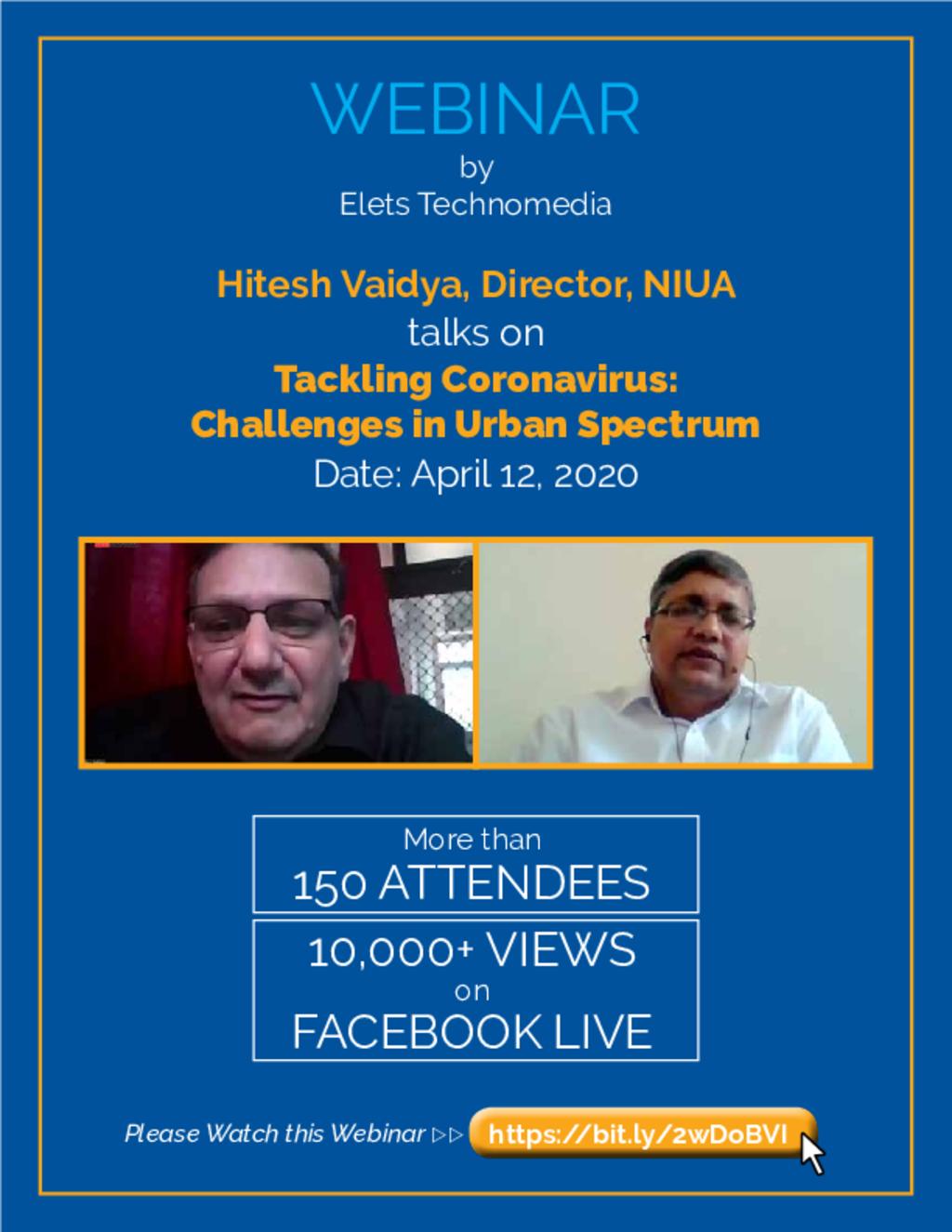 |
Webinar on Tackling Coronavirus: Challenges in Urban SpectrumIn this hour of worldwide crisis due to the outbreak of coviD-19, cities across the globe are putting all they have to contain the viral spread. similarly, indian cities are putting their best foot forward to meet the cause. a question arises here, are the smart technologies we have been implementing to empower our cities and male them smart can be of any help? To throw light on such aspects of the coviD-19 situation and significance of Urban Local Bodies (ULBs) in controlling the pandemic in city areas, Hitesh Vaidya, Director, NIUA participated in a webinar hosted by Dr Ravi Gupta, Founder and CEO, Elets Technomedia. The Webinar can be viewed here: https://www.facebook.com/ |
Water, sanitation, hygiene and waste management for the COVID-19 virusIn late 2019, an acute respiratory disease emerged, known as novel coronavirus disease 2019 (COVID-19). The pathogen responsible for COVID-19 is severe acute respiratory syndrome coronavirus 2 (SARS-CoV-2, also referred to as the COVID-19 virus), a member of the coronavirus family. In response to the growing spread of COVID-19, WHO has published a number of technical guidance documents on specific topics, including infection prevention and control (IPC). These documents are available at https://www.who.int/emergencies/diseases/novel-coronavirus-2019/technica.... This technical brief supplement the IPC documents |
|
 |
COVID-19 Guidance Note Protecting Residents of Informal SettlementsHousing has become the frontline defense against the coronavirus. Home has rarely been more of a life or death situation. In order to prevent the spread of COVID-19, States across the world are asking and, in some cases, legislating that people “stay home”. This is based on the assumption that one’s home provides protection against contracting and spreading the virus. |
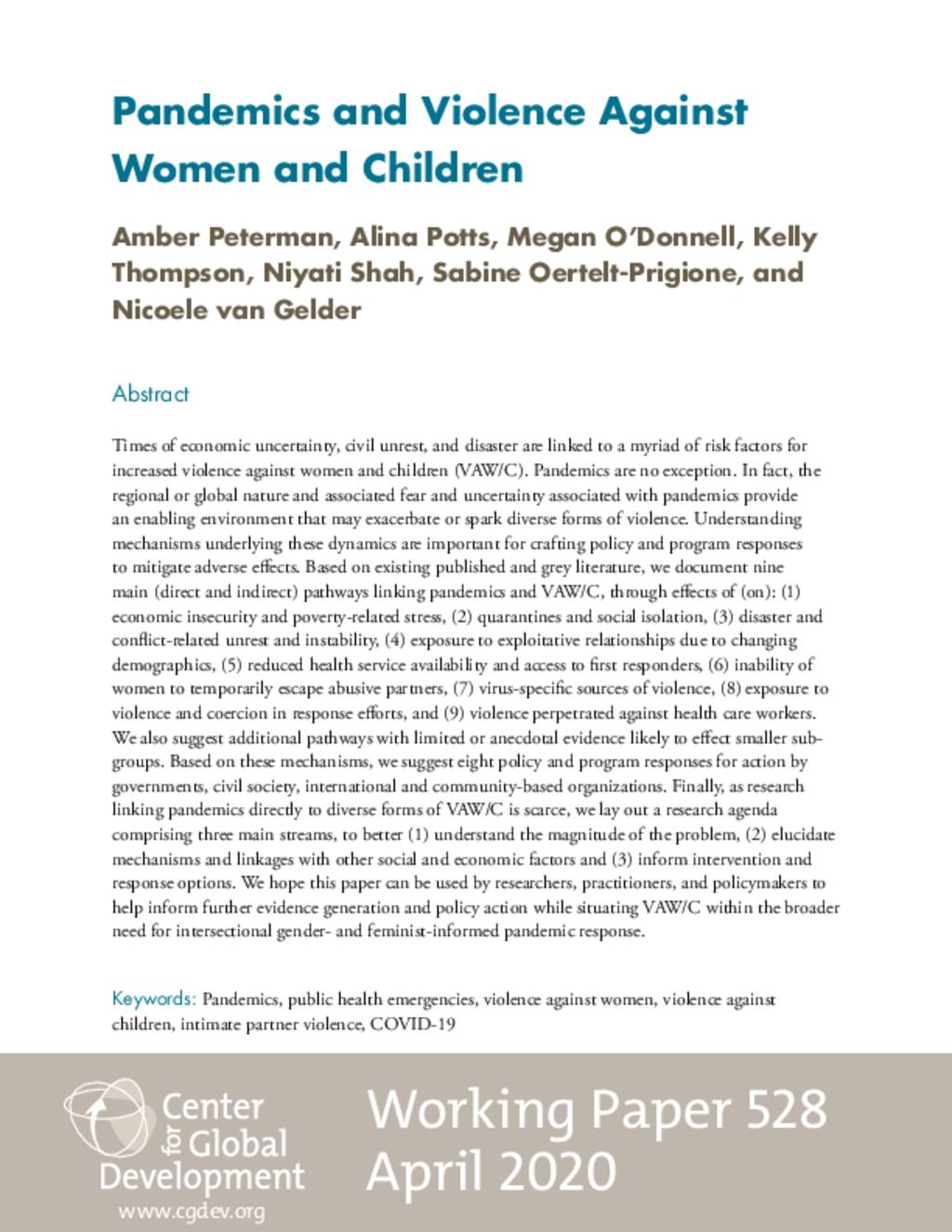 |
Pandemics and Violence Against Women and ChildrenTimes of economic uncertainty, civil unrest, and disaster are linked to a myriad of risk factors for increased violence against women and children (VAW/C). Pandemics are no exception. In fact, the regional or global nature and associated fear and uncertainty associated with pandemics provide an enabling environment that may exacerbate or spark diverse forms of violence. Understanding mechanisms underlying these dynamics are important for crafting policy and program responses to mitigate adverse effects. Based on existing published and grey literature, we document nine main (direct and indirect) pathways linking pandemics and VAW/C, through effects of (on): (1) economic insecurity and poverty-related stress, (2) quarantines and social isolation, (3) disaster and |
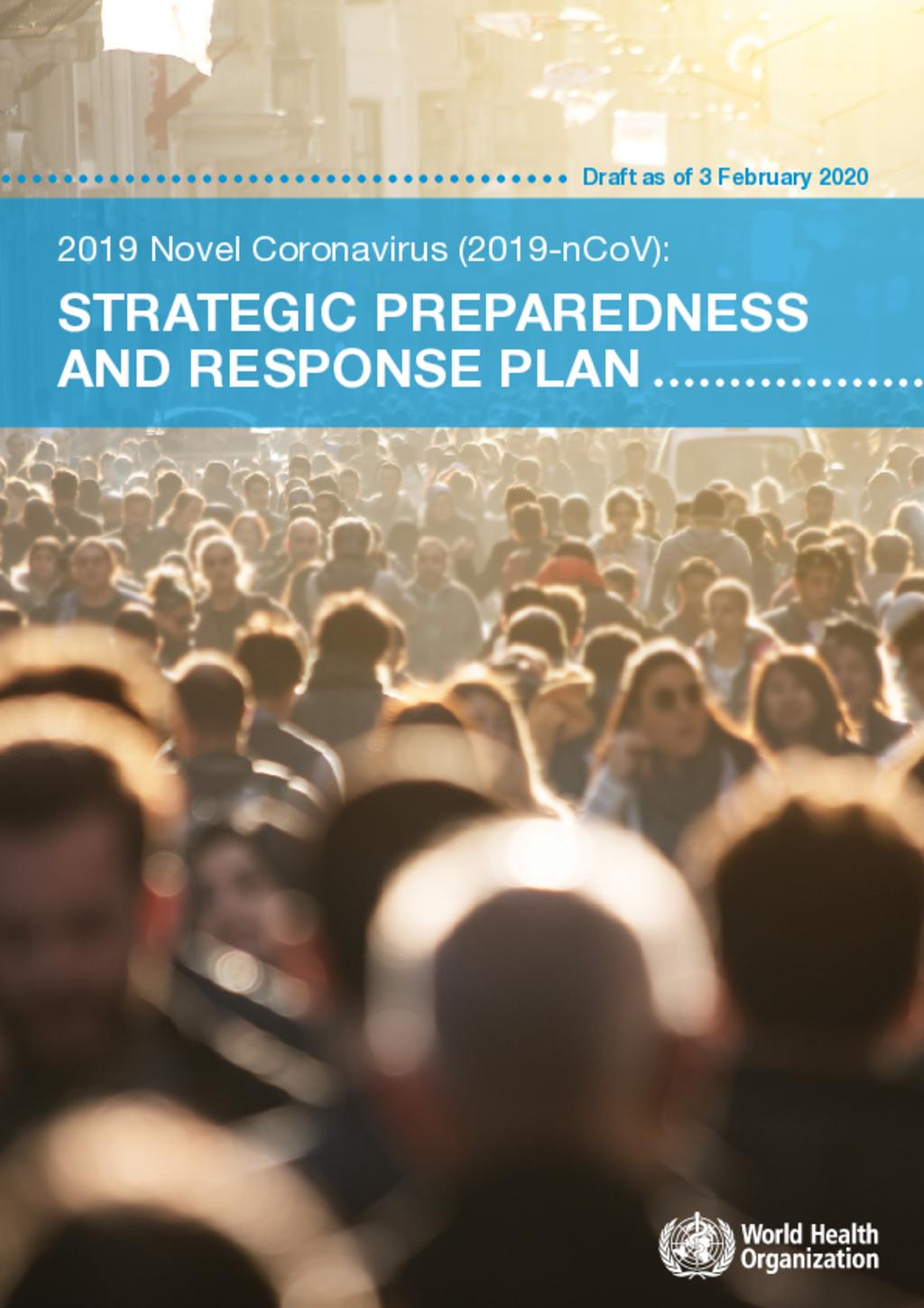 |
2019 Novel Coronavirus (2019‐nCoV): Strategic Preparedness and Response PlanOn 31 December 2019, WHO was alerted to a cluster of pneumonia patients in Wuhan City, Hubei Province of China. One week later, on 7 January 2020, Chinese authorities confirmed that they had identified a novel (new) coronavirus as the cause of the pneumonia (figure 1). The proposed interim name of the virus is 2019‐nCoV. Since the first cases were reported, WHO and its partners have been working with Chinese authorities and global experts to learn more about the virus, including how it is transmitted, the populations most at risk, the spectrum of clinical disease, and the most effective ways to detect, interrupt, and contain human‐to‐human transmission. This strategic preparedness and response plan outlines the public health |
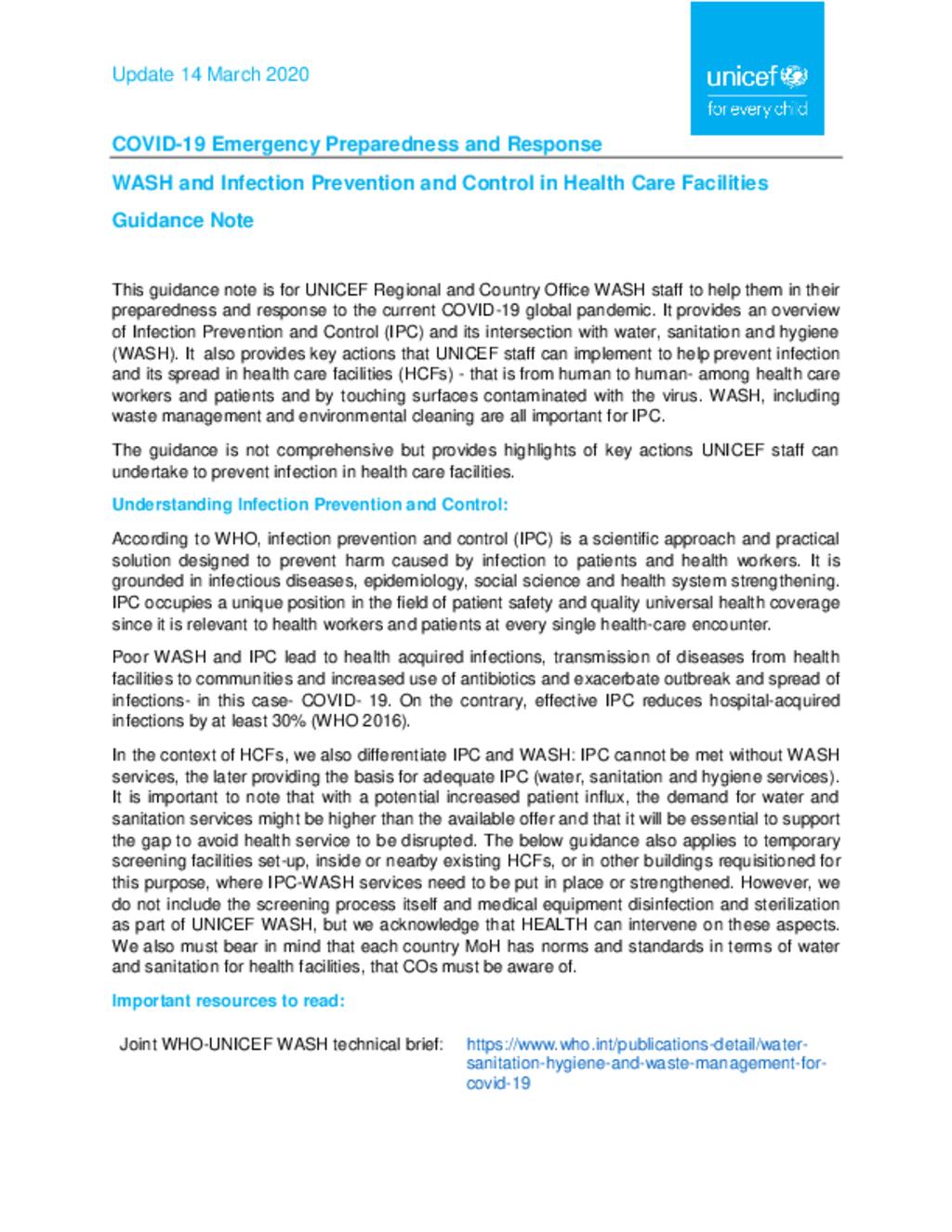 |
UNICEF Guidance Note - WASH and Infection Prevention and Control in Health Care FacilitiesThis guidance note is for UNICEF Regional and Country Office WASH staff to help them in their preparedness and response to the current COVID-19 global pandemic. It provides an overview of Infection Prevention and Control (IPC) and its intersection with water, sanitation and hygiene (WASH). It also provides key actions that UNICEF staff can implement to help prevent infection and its spread in health care facilities (HCFs) - that is from human to human- among health care workers and patients and by touching surfaces contaminated with the virus. WASH, including waste management and environmental cleaning are all important for IPC. The guidance is not comprehensive but provides highlights of key actions UNICEF staff can |
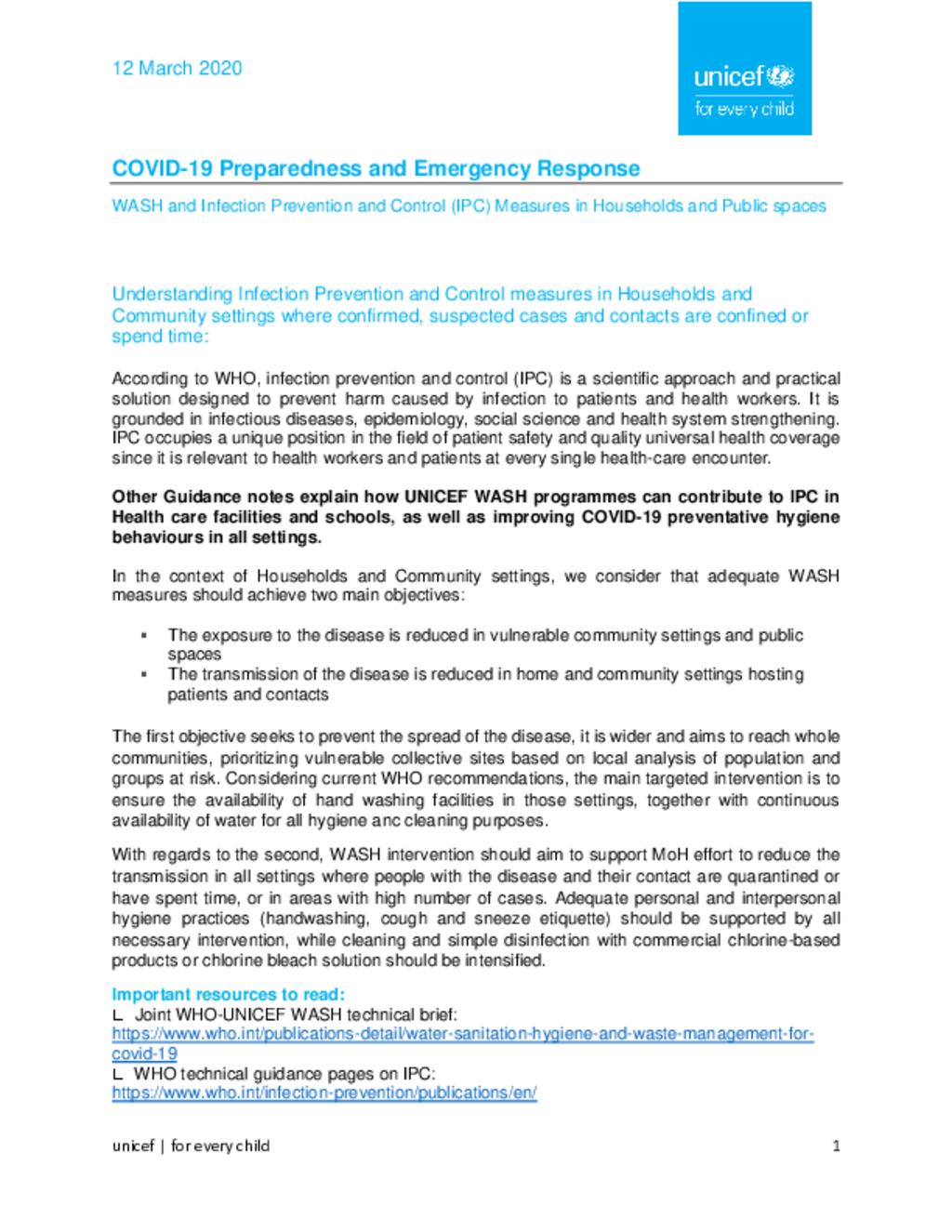 |
WASH and Infection Prevention and Control (IPC) Measures in Households and Public spacesUnderstanding Infection Prevention and Control measures in Households and Community settings where confirmed, suspected cases and contacts are confined or spend time: According to WHO, infection prevention and control (IPC) is a scientific approach and practical solution designed to prevent harm caused by infection to patients and health workers. It is grounded in infectious diseases, epidemiology, social science and health system strengthening. IPC occupies a unique position in the field of patient safety and quality universal health coverage since it is relevant to health workers and patients at every single health-care encounter. Other Guidance notes explain how UNICEF WASH programmes can contribute to IPC in |
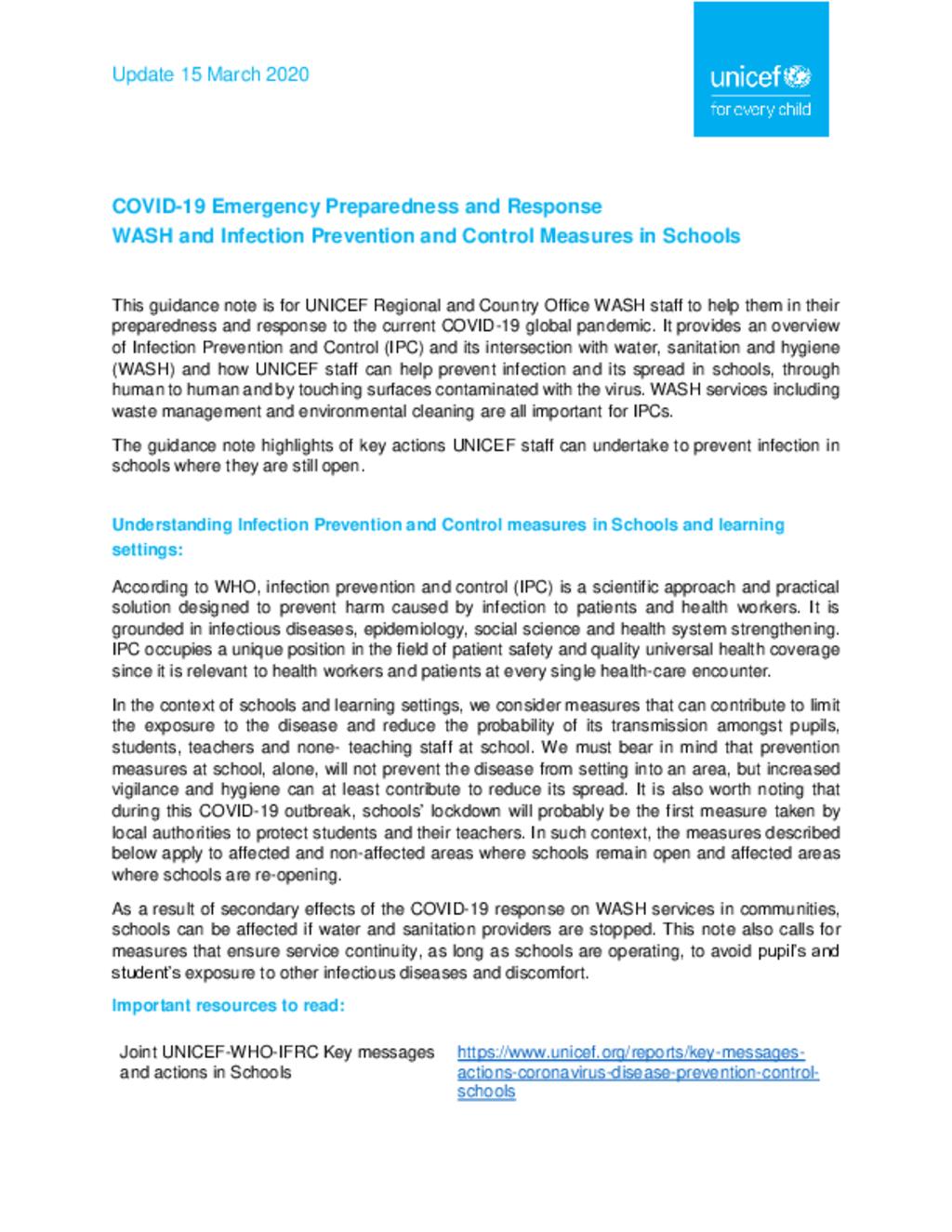 |
COVID-19 Emergency Preparedness and Response: WASH and Infection Prevention and Control Measures in SchoolsThis guidance note is for UNICEF Regional and Country Office WASH staff to help them in their preparedness and response to the current COVID-19 global pandemic. It provides an overview of Infection Prevention and Control (IPC) and its intersection with water, sanitation and hygiene (WASH) and how UNICEF staff can help prevent infection and its spread in schools, through human to human and by touching surfaces contaminated with the virus. WASH services including waste management and environmental cleaning are all important for IPCs. The guidance note highlights of key actions UNICEF staff can undertake to prevent infection in schools where they are still open. |
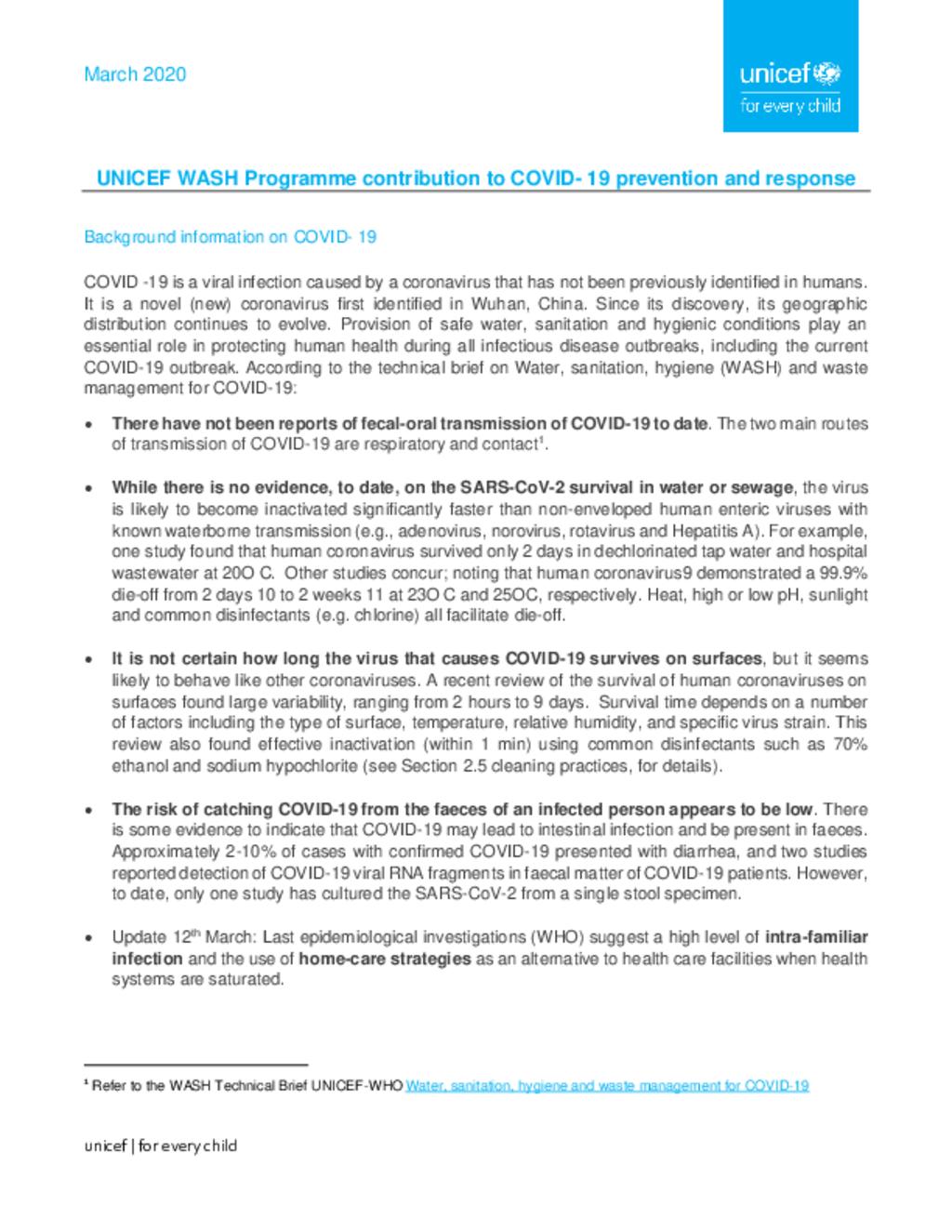 |
UNICEF WASH Programme contribution to COVID-19 prevention and responseCOVID -19 is a viral infection caused by a coronavirus that has not been previously identified in humans. It is a novel (new) coronavirus first identified in Wuhan, China. Since its discovery, its geographic distribution continues to evolve. Provision of safe water, sanitation and hygienic conditions play an essential role in protecting human health during all infectious disease outbreaks, including the current COVID-19 outbreak. |